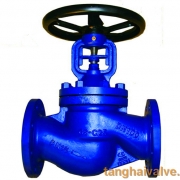What is the gear modification coefficient
The standard gear transmission has some limitations:
(1) Limited by undercutting, the number of teeth should not be less than Zmin, making the transmission structure not compact enough;
(2) Not suitable for occasions where the installation center distance a’is not equal to the standard center distance a. When a'<a, it cannot be installed, when a’>a, although it can be installed, it will produce excessive backlash and cause shock and vibration, which will affect the stability of the transmission;
(3) When a pair of standard gears are driven, the pinion has a small tooth root thickness and more meshing times, so the strength of the pinion is low, and the wear of the tooth root is also serious. Therefore, the pinion is easy to be damaged, and it also limits The carrying capacity of the big gear.
In order to improve the performance of gear transmission, a shifted gear appeared. As shown in the figure, when the tooth top line of the rack slotting tool exceeds the limit meshing point N1, the cut gear will undercut. If the rack is inserted away from the wheel center O1 for a certain distance (xm) and the tooth top line no longer exceeds the limit point N1, the cut gear will not undergo undercutting, but at this time the index line of the rack and the division of the gear The degree circle is no longer tangent. The gear cut after changing the relative position of the tool and the tooth blank is called the displacement gear, the distance xm the tool moves is called the displacement, and x is the displacement coefficient. The displacement of the tool away from the wheel center is called positive displacement, at this time x>0; the displacement of the tool moving closer to the wheel center is called negative displacement, at this time x<0. The standard gear is the gear with the modification coefficient x=0.

 tanghaivalve.com
tanghaivalve.com

 © Copyright 2020 Tianjin Tanghaidongyang Valve Co., Ltd. All Rights Reserved.
© Copyright 2020 Tianjin Tanghaidongyang Valve Co., Ltd. All Rights Reserved.